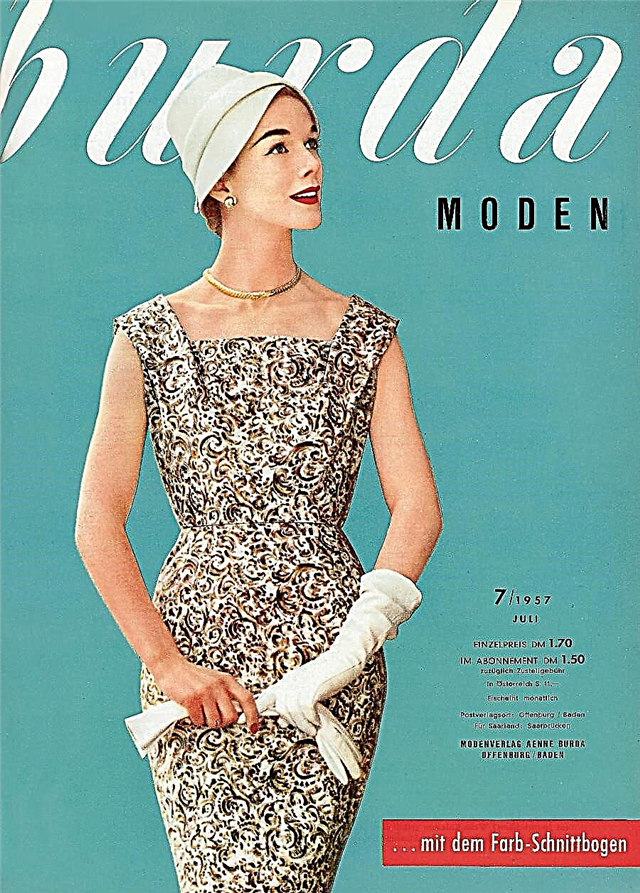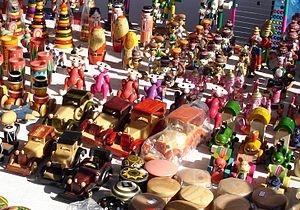Lightweight and delicate chintz is not such a simple fabric as we used to think!
 Photo: Little Borrowed Dress, Oroboro Store
Photo: Little Borrowed Dress, Oroboro Store
In Soviet times in short supply there was a joke: "A call to a fabric store: - Do you have a screen of a cheerful coloring? - Come, have a good laugh."
How to wear a floral print: 5 main rules and 12 fashionable images
The “merry sitik” in the Soviet interpretation is really a non-standard thing: a dress with a pattern of marching pioneers, a dressing gown with smoking factories and skirts with tractors. Against the backdrop of such beauties, a traditional chintz in a small flower looked really boring and inexpressive! It is not surprising that the flower chintz was nicknamed "grandmother", especially in combination with the dress-gown style.

 Photo: examples of Soviet chintz, pinterest
Photo: examples of Soviet chintz, pinterest
In fact, chintz, even the funniest, has nothing to do with age-related fashion, and at one time this natural fabric could compete in popularity with the most expensive fabrics in popularity.
- Special offer

 Corsage Dress
Corsage Dress- 1
- 2
- 3
- 4
- Best-seller
- Special offer

- 1
- 2
- 3
- 4
How chintz appeared
Printed chintz appeared in the 11th century in India. It is difficult to say what prints were in use then, but, for example, in the Indian literature in the XII century printed printed cotton fabric with a lotus pattern is mentioned. Due to its properties, subtlety and delicacy, chintz can be safely called one of the most suitable fabrics for hot weather, therefore, in Indian weather conditions, it was in use.
 Photo: Old Indian Chintz, Musée de la Toile
Photo: Old Indian Chintz, Musée de la Toile
Centuries later, an Indian chintz came to Europe, captivating all fashionistas! Home and summer clothes, decor items were sewed from it, used for upholstery. And at the end of the 16th century, England became acquainted with the Indian chintz in a very brutal way: in 1592, the Portuguese ship "Our Lady" with a cargo of chintz on board was captured. Since Indian fabrics were expensive, European craftsmen were looking for a way to abandon imports and reduce the cost of production, which happened over time.
 Photo: Men's calico costume, Centraal Museum; 18th century print dress, The Met
Photo: Men's calico costume, Centraal Museum; 18th century print dress, The Met
In the Soviet Union, cheap chintz was very popular, and since the 1780s, chintz in large volumes began to be produced in Ivanovo, for which the city was called the "chintz kingdom". By the way, today in Ivanovo there is a chintz museum that everyone can visit.
How to wear chintz today
 Photo: Tiger Lilly, Peruvian Connection
Photo: Tiger Lilly, Peruvian Connection - Special offer
- 1
- 2
- 3
- 4
- Special offer

- 1
- 2
- 3
- 4
Since chintz a few centuries ago has ceased to be considered expensive, in our days a lot of cheap dressing gowns and sundresses are really sewn from this fabric, which can hardly be called the latest fashion. But at the same time in the shops you can find charming, slightly naive dresses in the style of "young lady-peasant."
Young Lady Peasant Dresses in a Modern Wardrobe
 Photo Credit: Christy Dawn
Photo Credit: Christy Dawn
But today, fabric with original Indian prints and plots is considered to be truly fashionable chintz: intricate and fantastic floral motifs, exotic patterns, the tree of life, and many others.
 Photo: Tory Burch, Mulberry
Photo: Tory Burch, Mulberry In addition, despite the fact that chintz is associated with summer and hot weather, designers offer not to give up this material in the coming season and to supplement their wardrobe with more closed dresses.



